
10 Questions for… Artist & Co – Curator of BORI-CUBA at Clemente Soto Vélez Cultural & Educational Center
Cuban-born Bronxite Alexis Mendoza has been busy! A true renaissance man, Mendoza is an interdisciplinary artist, curator, author and co-founder of two Bronx-based art collectives. He is currently on exhibit at Derfner Judaica Museum in Riverdale, and is co-curating a major exhibition of Puerto Rican and Cuban artists on the Lower East Side.
To Forgive and Remember: Reshaping Contemporary Consciousness at Derfner Judaica Museum + The Art Collection at Hebrew Home at Riverdale. On view September 10, 2015–January 3, 2016. Reception with the artists: Sunday, October 18, 3:30pm–5:30pm.
BORI-CUBA 2X2 at Clemente Soto Vélez Cultural & Educational Center, 107 Suffolk St, New York, NY
On view November 6th to December 6th 2015. Opening reception: Friday, November 6, 6:00pm – 9:00pm
Here are 10 Questions for Alexis Mendoza:
Laura James | Tell us something about your background.
Alexis Mendoza | I am an artist; a writer and an independent curator who presently lives in the Bronx, New York. I graduated from the National School of Fine Art in San Alejandro, Havana, Cuba in 1988, and received a Masters in Art History from Havana University in 1994. My artwork has been exhibited in museums and galleries around the world in countries such as Argentina, Brazil, Chile, Costa Rica, Cuba, England, France, Germany, Mexico, the Netherlands, Peru, Romania, Spain, Switzerland, and the United States. I am the co-founder and co-creator of the Bronx Latin American Art Biennial, and a founding member of BxArts Factory. I’ve curated exhibitions and art projects at the Bronx Museum of Art, Museum of Piraguasu Paulista, São Pulo, Brazil, Museum of Satu Mare, Romania, The Point, Bronx NY, Bronx Art Space, Bronx, NY, Boricua College Art Gallery, New York, NY, Union College, Schenectady NY, at The Mexican Cultural Institute, NY and at the Bronx Historical Society Museum, Bronx, NY. I am also the author of books, including Latin America, The Culture and the New Men, Objective Reference of Painting: The Work of Ismael Checo, 1986-2006, and Reflections: The Sensationalism of the Art from Cuba, all published by Wasteland Press; and Rigo Peralta: Revelaciones de un Universo Mistico, published by Argos Publications, Dominican Republic.
LJ | How important is your Cuban heritage to your art?
AM | Every single aspect of my work is based on my Cuban identity. I am always expressing some type of independence, similar to the original premise that drove the Cuban avant-garde and served as a model for a new society.
LJ | Who are some of the artists that influence your work?
AM | Black Painting is the style and philosophy that I employ in my painting. The term was established in Cuba in the 1950’s by Guido Llinas, a prominent Cuban abstract painter, printmaker and member of the Eleven Group. A general characteristic of my Black Painting is the use of three predominant colors with emblematic function, as in Abakua drawing, where yellow signifies “life”, white “death”; or as in Santeria, where every Orisha is defined by a color. The work and techniques employed by Manuel Mendive, Jose Bedia, Flavio Garciandia, Mark Rorthko, Jackson Pollock, and Willen de Kooning are all strong influences on my work. I also use the literary work of anthropologists, Cuban writers and ethnographers such as Fernando Ortiz, Lidia Cabrera and Alejo Carpentier as an inspiration in my paintings, sculptures and installations.
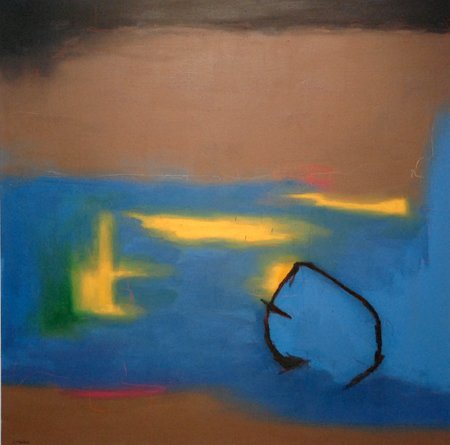
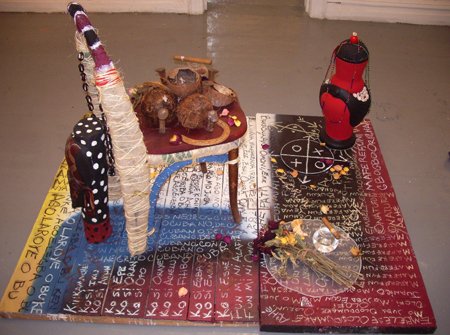
LJ| How do you manage your art practice while curating and facilitating other projects?
AM | I must confess, I enjoy very much the balance that all of these activities create in my life; they compliment each other. I use the investigation part of the curatorial ideas to find meaning and purpose in my personal work. This dynamic is a part of my life; long ago I made a conscious decision that being involved in many projects is what I want to do and so far it is working out.
LJ | How did you come to be included in the show at Derfner Judaica Museum?
AM | I came across the call for artists at the BX200 website and I happened to be working on a series of pieces with vintage furniture and steel nails that matched the criteria of the curatorial statement the museum presented. I followed the submission guidelines, sent in the images and information related to the work, and the director of the museum contacted me a few days later with the good news that my piece was accepted to be a part of that incredible show.
LJ | The show is called, To Forgive and Remember: Reshaping Contemporary Consciousness; what are you exhibiting in the show and how does the work relate to the theme?
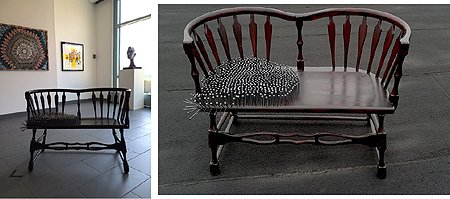
Untitled, 2015, 1945 wood bench and steel nails, 41L” x 22W” x 28H”
AM | I am presenting a piece from an ongoing series titled TIME and PLACE, a body of work that I hope will bring new ideas of exploration into our personal ways of thinking. I use vintage or antique furniture as a representation of the past; to the furniture I’ve introduced the acceptance of pain in the form of steel nails. We may be living with pain but we most continue, we most forgive, we most forget. Furniture has the ability to tell stories; we sit on these pieces to tell/listen to stories. These are my personal pieces; I lived with the furniture for long time, they know me. The strength of the nails on the wood, and the sensibility of the bench or chair, etc., creates a moment that does not exclude the spectator, but includes me; inviting me to activate the viewer’s visual and emotional perception. The intention of my artwork, as a result, is to bring the viewer to a place of hope, rhythm, remembrance or surprise, or to a smile.
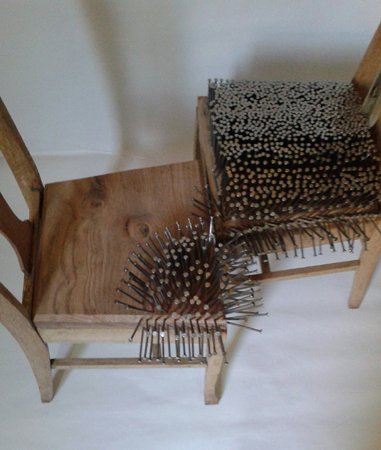
Alexis Mendoza I Know This is a… Difficult Situation
LJ | You’ve just curated a large group exhibition titled BORI-CUBA 2X2, featuring the work of 26 artists with Puerto Rican or Cuban heritage, where did the idea for this show come from?
AM | Every year in November, The Center Clemente Soto Velez on the Lower East Side celebrates Puerto Rican heritage month. Two years ago the curator there invited me to attend a meeting with the organizing committee because they were thinking about doing a show mixing artists from Cuba and Puerto Rico. They knew about the publication of my book on Cuban Art, and my knowledge of contemporary Latin American art. We met and agreed on the concept and the artists for the show, and I was hired to co-curate the exhibition.

LJ | Are there any pieces or artists whose work stands out to you in this exhibition?
AM | The immigrant experience as told through all the artworks in the exhibition highlight concepts of sustainability and our society’s long-term potential, dependent upon responsible use of resources and balancing the disruptive relationship between both humans and their environment, and among humans with each other. For Luis Stephenberg, sculptures become a morphological term which orients the space in a narrow and specific visual axis, alive and in no danger of their petrification. I feel that the work of Juanita Lanzo explores passion, freedom, and hope, but also fear, vulnerability, and pain that are difficult to explain publicly.

Luis Stephenberg, Arquetipo Repertorio PCafe
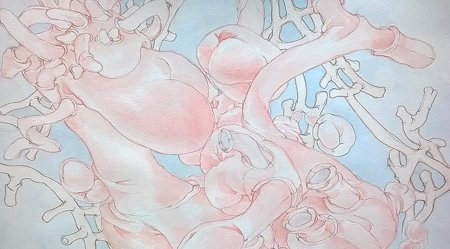
Juanita Lanzo
LJ | You are one of the founders of BxArts Factory, tell us about the organization.
AM | Our mission is to make art accessible to everyone in the Bronx; by supporting local artists and art projects we hope to increase the number of artists using art to create social change in the borough. The BxArts Factory sponsors regular art exhibitions at venues in the Bronx, organizes programs and networking events for artists, develops emerging artists through workshops and educational programs, collaborates with other organizations and local businesses to strengthen ties to the community, and increases community engagement with art through workshops, street fairs, and other events. Along with my partners Yolanda Rodriguez, Twahira Khan, and Laura Alvarez, we are formulating new plans and activities including artist residency programs, and the BxArts Factory WorkSpace and Research Library.
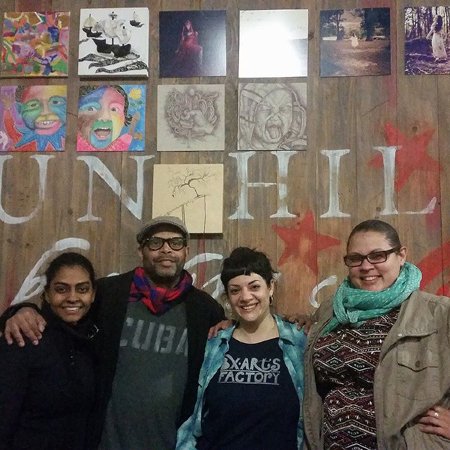
LJ | You are the co-founder of the Bronx Latin American Art Biennial; tell us a little about it and when it will be presented again.
AM | The Bronx Latin American Art Biennial will be presented in 2016, our main objective is to develop an international network of Latin American artists, and give them opportunity to exhibit the best of their works. The event is to motivate the creative mind and challenge the contemporary global art community. These group exhibitions present art as an expression of the human condition, and reflect the notions of progress, civilizations, welfare, society, women rights, gay rights and culture. The exodus process has become critical in Latin American countries, and for a lot of Hispanics living in the United State this is the final frontier. This reality has dramatically revealed the inability of many governments to meet the growing needs in today’s society. The Bronx Latin American Biennial is aimed to provide education and cultural information for everyone. All the events are family oriented and we celebrate not only the richness of Latin American art, but also the diversity of our community. We present panel of discussions, art exhibitions, urban installations and performances by artists from Argentina, Bolivia, Chile, Colombia, Costa Rica, Cuba, Ecuador, El Salvador, Spain, Guatemala, Honduras, México, Nicaragua, Panamá, Paraguay, Perú, Puerto Rico, Dominican Republic, Uruguay and Venezuela. Look out for announcements next year, it’s going to be great!
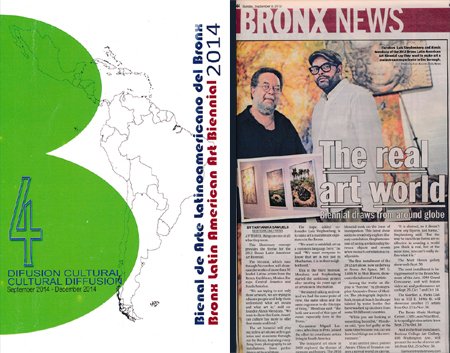



Yolanda Rodriguez
Excellent interview bx200! Bravo Alexis!